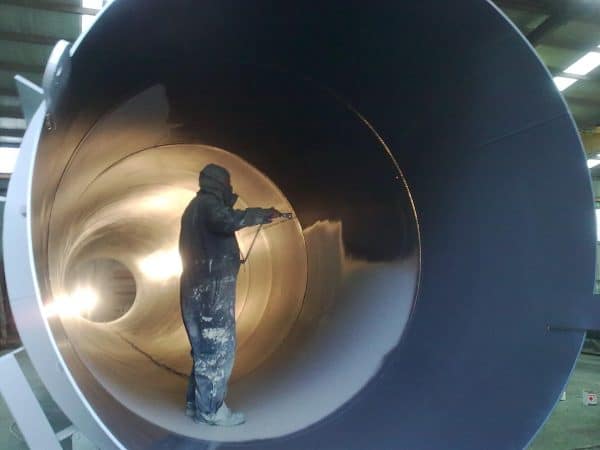Tanks are often subjected to corrosion from the inside out. This makes containment tanks, particularly liquid storage containers, some of the most challenging industrial structures when it comes to corrosion prevention and protection.
From ordinary potable water to complex and specialized chemicals, liquids stored inside containment tanks uniquely affect inner tank coatings. The reaction exposes the tank’s inner chamber to the constant possibility of corrosion, abrasion, and decay.
How does corrosion take place?
In general, tank corrosion occurs when liquids or acidic elements produce a chemical reaction when they come in contact with the surface of the tank.
What’s the damage?
The constant reaction leads to corrosion, which has the effect of degrading the tank’s material, discoloring the tank’s surface, and causing severe deterioration that can threaten the tank’s structural integrity.
The likelihood of damage due to corrosion is, therefore, one of the main reasons why it is very important to choose the correct tank coatings for tank protection.
Three basic types of protective chemical coatings to consider:
Epoxy
These two part coatings come in two basic formulations. One is called Bisphenol A and the other is known as epoxy novalac. The nomenclature refers to the types of hardening agents utilized in the processes.
When the hardener is added to the resin a complex set of links or chains is formed. This three-dimensional matrix gives the coating its chemical resistance. Generally, the epoxy novalac is more resistant because it has more sites available for cross-linking and forms more chains as it cures.
Polyurethanes
These are also reactive coatings, but their chemistry is different from typical epoxies. Urethanes (as they are often called) can be one part or two part systems. The one part system reacts with moisture in the environment. The two-part system utilizes chemicals that cause a different reaction than epoxies to form cross-linked polymers.
Polyurethanes are much more versatile than epoxies, depending upon their formulation. They can be made to cure hard and rigid, or more soft and elastic. There are even concrete polyurethanes available.
Fluoropolymers
The most well known of these coatings is Teflon ©. These compounds’ chemical makeup is built upon fluorine. The fluorine creates extremely strong bonds, which make this coating almost impervious to chemicals. The fluoropolymers are more expensive and more difficult to use.
Commercial Painting California
An experienced industrial and/or commercial painting contractor will help you decide which is best for your company.



